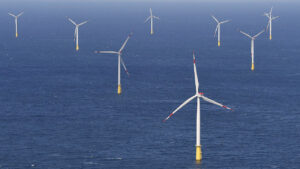By Sheldeen Joy Talavera, Reporter
THE PHILIPPINES will need between P20 trillion and P31 trillion worth of investment to properly implement the Philippine Energy Plan (PEP), which will involve boosting the share of renewable energy (RE) in the power mix, the Department of Energy (DoE) said.
“When we talk about renewable energy, we need a total investment of P20 trillion to P31 trillion,” Energy Undersecretary Rowena Cristina L. Guevara said at the Asian Development Bank (ADB) forum on Tuesday.
RE currently holds a 22% share of the power generating mix. The government is aiming to increase this share to 35% by 2030 and 50% by 2040.
Other strategies for hitting the target include building smart and green transition system, building up port infrastructure to facilitate the servicing of offshore wind farms, and voluntary early decommissioning or repurposing of coal-fired power plants.
The funding can be provided by the private sector and the banking system, Ms. Guevara said on the sidelines of the forum.
However, she said that the government is encountering challenges, including permitting issues.
As of February, the DoE had awarded over 1,300 renewable energy service contracts with a potential capacity of over 134,000 megawatts (MW).
Many developers tend to stall out in the pre-development stages and may not continue with their projects, she said.
Ms. Guevara said the DoE is targeting over 52.8 gigawatts (GW) of renewable energy on top of the existing and committed power plants in the Philippines.
Of the total, 27,000 MW are solar projects, 16,600 MW wind, 6,000 MW hydro, 2,500 MW geothermal, and 360 MW biomass.
“About 134,631.87 MW potential capacity can still be tapped from projects in the pre-development and development stages,” Ms. Guevara said.
“We need more encouragement for our banking sector to engage in renewable energy investments,” Ms. Guevara said at the forum.
Citing a study funded by the Rockefeller Foundation, Ms. Guevara said Philippine banks “can actually finance two-thirds of our energy transition.”
“But they need a leader who will help them understand the risks and rewards of investing in renewable energy,” she said.
Ms. Guevara said that to meet the 52.8 GW target, “we have to almost double our transmission system” which currently can support power generation of 28 GW.
Among the major projects of the National Grid Corp. of the Philippines is the Mindanao-Visayas Interconnection Project and the Cebu-Negros Panay Project.
The Hermosa-San Jose 500-kiloVolt Transmission Line, which has been stalled by a temporary restraining order, is targeted to be completed by July 15, Ms. Guevara said.
Warda Ajaz, project manager for the Asia Gas Tracker at the think tank Global Energy Monitor, said that the Philippines “boasts impressive solar PV (photovoltaic) and wind energy potential.”
To avoid being reliant on “economically volatile and insecure fuel sources” such as liquefied natural gas (LNG), she said that the country should instead put its investment into renewable energy.
“The billions of dollars being spent on new LNG infrastructure should instead be diverted toward scaling up renewable energy capacity to ensure a sustainable, secure, and economically stable energy future,” she said in an e-mail to BusinessWorld on May 31.
New LNG infrastructure risks “technological lock in” which will delay the transition to renewable energy, she said.
“Policymakers should prioritize investments in renewable infrastructure and technologies, along with energy storage solutions, to provide reliable and clean baseload power,” she said.
